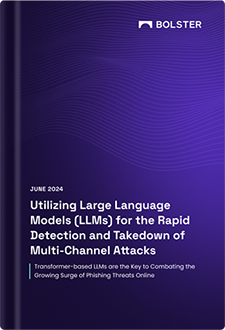Natural Language Processing (NLP) is a branch of artificial intelligence that focuses on the interaction between computers and human language. It enables computers to understand, interpret, and generate human language in a way that is meaningful and useful. NLP involves tasks such as text classification, sentiment analysis, language translation, question answering, and chatbot development. NLP in cybersecurity is a powerful tool for enhancing fraud detection and prevention. It allows systems to process and analyze unstructured textual data, such as customer emails, online comments, or transaction descriptions, to extract meaningful information.
NLP algorithms can identify sentiment, detect keywords related to fraud, or even gauge the similarity of communication patterns to previously identified fraudulent cases. By applying NLP techniques, AI systems can improve fraud detection accuracy by interpreting large volumes of text data that hold valuable insights about fraudulent activities. This gives fraud analysts a better understanding of potential risks and aids in the decision-making process.
Cybersecurity Advancements with NLP Technology
Traditionally, NLP relied on models like Multilayer Perceptron (MLP), which are simple neural networks used for tasks such as text classification and sentiment analysis. While effective, these models have limitations in handling complex language tasks and understanding context over long texts.
A significant breakthrough in NLP has been the development of generative AI models, particularly transformers. These sophisticated neural network architectures, introduced in the paper “Attention Is All You Need” by Vaswani et al. in 2017, have fundamentally changed the way we approach language understanding and generation tasks.
At their core, transformers rely on a mechanism known as “attention” to process sequences of data, making them exceptionally effective in handling sequential data like text.
What sets transformers apart is their ability to process input data in parallel, rather than sequentially like traditional recurrent neural networks (RNNs). This parallelization, driven by the attention mechanism, allows transformers to capture long-range dependencies in text, making them highly efficient at tasks such as machine translation, text summarization, sentiment analysis, and more.
In cybersecurity, this capability is crucial for understanding context and detecting subtle anomalies in communication patterns, which can be the difference between identifying a threat and missing it.
One of the most famous transformer-based large language models is BERT (Bidirectional Encoder Representations from Transformers), which pre-trains on a massive corpus of text data and has shown remarkable performance improvements for NLP tasks.
Large language models like BERT have become the backbone of many state-of-the-art NLP models and have enabled significant advancements in areas such as question answering, language translation, chatbots, and sentiment analysis.
The ability to transfer knowledge learned from pre-training to downstream tasks has simplified the development of NLP applications in cybersecurity, making it easier to implement robust and effective fraud detection systems.
Other Key Techniques for NLP in Cybersecurity
In addition to transformer models like BERT, several other NLP techniques are instrumental in enhancing cybersecurity measures:
Topic Modeling
Topic modeling is an unsupervised learning technique used to extract abstract topics from a given set of documents. For our task, we used a popular method called Latent Dirichlet Allocation (LDA). This method represents documents as distributions over topics and topics as distributions over words, where the distributions are modeled after Dirichlet distributions. LDA helps in identifying the underlying themes in large collections of texts, making it easier to analyze and categorize them.
Text Clustering
Text clustering is another unsupervised learning technique used to group similar documents together based on their content. Methods like K-means clustering and hierarchical clustering are commonly used for this purpose. By converting documents into numerical vectors, these algorithms can measure the similarity between texts and cluster them accordingly. This technique is useful for organizing large volumes of text data, enabling efficient information retrieval and analysis.
Entity Recognition
Entity recognition, also known as Named Entity Recognition (NER), is a technique used in NLP to identify and classify key information (entities) in text into predefined categories such as names of people, organizations, locations, dates, and other specific terms. This technique is crucial in cybersecurity for extracting vital information from vast amounts of unstructured data, such as identifying potential threats, perpetrators, and targeted entities.
By leveraging the power of NLP, transformer models, topic modeling, text clustering, and entity recognition, cybersecurity professionals can develop more sophisticated tools to analyze and respond to potential threats, ensuring better protection and faster response times in the ever-evolving landscape of cyber threats.






